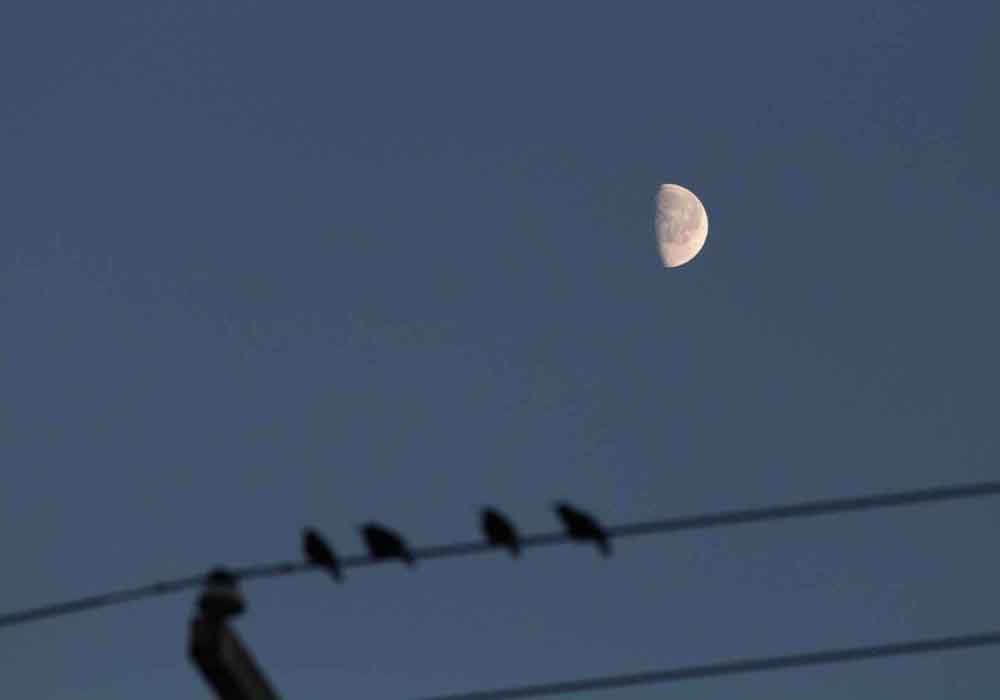Where Do Birds Go in the Winter?
Birds are fascinating animals that you can hear singing from the early morning during the summer, but once winter hits, it gets colder, and the chirping sounds lessen. So, where do birds go in the winter? And if they don't go anywhere, how do they keep warm?
Birds travel far and wide in the winter, but not all of them. Some species, like swallows, like to migrate to warmer climates to escape the frosty winter. But other species, like house sparrows, want to stay put. Birds that don't migrate keep warm by growing extra feathers and eating more.
This article will discuss where birds go during winter in more detail. It will also discuss whether or not birds hibernate and if they can die from cold weather, so keep reading to learn more.

Do Birds Migrate to Warmer Climates During Winter?
Some birds migrate to warmer climates during winter. Examples of such birds include swallows and redwings. Birds that don't migrate during winter include house sparrows, magpies, mallards, and cardinals.
You can group birds into two groups:
- Migratory. Migratory birds leave their homes in the winter in favor of warmer temperatures. Includes swallows, snow geese, and redwings.
- Non-migratory. Non-migratory birds stay home and don't travel more than a few miles.
Where Do Migratory Birds Go?
If you're still wondering–where do birds go in the winter?–the answer is that it depends on the species. Below, I'll discuss some of the different bird species and which places they tend to fly to.
Swallows Travel to Central/South America and Africa
You'll find swallows worldwide, including in Europe and the US. However, they don't remain in these places once the temperatures start to dip.
All swallow species in the US migrate to Central and South America, where the temperatures are warmer. Once winter ends in the southern hemisphere and temperatures begin to rise, swallows return and enjoy their summers back home.
They don't wait until the weather has already become freezing to migrate–instead, they prepare by leaving the US for Central and South America during fall. That way, they can go before the cold weather becomes too intense. And the weather is perfect when they arrive at their destinations.
Although swallows from the US tend to fly to South and Central America during winter, swallows from Europe go elsewhere. The Americas are more complicated for the swallows in Europe to reach, so instead, they migrate to Southern Africa.
Since swallows coming from Europe have plenty of places to stop and take breaks (across the land in Europe and Africa), it's a favorable journey for them. Once winter is over in the Northern hemisphere, swallows like to make their way back to Europe for the summer.
Still, many swallows don't survive the journey to Africa, as they must deal with harsh weather conditions along the way. They also need to fatten up before traveling to ensure they have enough energy to fly long distances and keep warm.
Redwings Travel to Ireland, the UK, and Southern Europe
Redwings are commonly found in Russia and Scandinavia. However, some have been found across North America. Since they primarily live in Russia and Scandinavia, they must escape the harsh winters by traveling to warmer climates. They commonly travel to the UK and Ireland.
Although UK and Ireland's weather isn't hot during winter, it is warmer than in Russia and Scandinavia. So, it's easier and more comfortable for redwings to travel and get warmth. They're also known to travel to countries in southern Europe, where the weather is warmer than in the UK and Ireland.
Snow Geese Travel to the Southern US States
Despite their name, snow geese like to travel to the coasts of the US during winter to escape the cold temperatures up north. They're primarily found around the Arctic Tundra during summer. Although they like to travel to coastal areas in the US during winter, some migrate to Mexico for warmth.
Snow geese are excellent flyers and can travel long distances at high speeds, so migrating isn't always such a challenging feat for them.
Here's an interesting YouTube video that answers
How Do Birds Survive The Cold...
What Do Non-Migratory Birds Do in Winter?
When thinking to yourself–where do birds go in the winter?--you must remember that not all birds travel far and wide. Plenty of species are homebodies and like to remain in the same spot each year. Others might not be the best at flying long distances, so staying in the same place is more manageable.
No matter the case, birds still need to keep warm when the weather gets colder. There are different things they can do to stay warm, and I'll discuss them in detail below.
Grow Extra Feathers
Many birds molt, meaning they lose and gain feathers throughout the year. When the weather gets colder, birds will begin to grow extra feathers for added warmth and comfort, which helps them survive the harsh winters.
Then, as the weather warms up, they lose the extra feathers, and the process starts again. Different species molt in different ways and at various times.
You can think of the extra feathers as a warm blanket or clothing for the birds. When humans are cold, we wrap up in warm clothes and blankets. So, this is a bird's way to do that during the colder weather.
Find Warm Places To Stay
During the winter, birds like to find warm places to shelter and avoid rain and snow. Anywhere sheltered and away from trouble and predators is favorable, so you're more likely to see birds hiding away in quiet places when it's cold out.
When they find a warm, sheltered area, they can keep warmer by curling up with their feathers and sleeping in certain positions.
Huddle Together
Many bird species huddle together at night to stay warm, and it's an easy and effective way to do it. It also keeps them safer from danger. The heat from all their bodies helps them to stay warm. For example, starlings and nuthatches like to sleep together in large groups, with nuthatches sometimes sleeping on top of each other to keep warm.
Eat More Food To Keep Themselves Warm
It takes a lot of energy for birds to keep warm during the winter, so to keep their energy levels up, they need to consume more food than they would in the summer. Additionally, food sources are more scarce during the winter, so it's recommended to feed birds in your yard if you have regular visitors in the cold weather.
Birds need more calories to get through the harsh weather, so their chances of surviving the winter are higher once they get plenty of food. Peanuts and sunflower seeds are full of calories and excellent foods to feed birds to help them survive the cold.

Check out our 23 Birds of Winter article for a look at those birds that don't migrate...Which ones do you have in your neighborhood?
Do Birds Hibernate To Survive the Winter?
Birds don't hibernate to survive the winter. Instead, they migrate to warmer places or keep warm through other means, like eating more food and finding shelter.
They are warm-blooded, so their bodies remain at a regulated temperature, meaning hibernation is generally unnecessary. However, some birds may enter a state of torpor during winter.
Although this is rare, some birds do it to save energy and heat because it slows down their heartbeats. Examples of birds that go into torpor during winter include hummingbirds and doves.
While hibernation indicates complete dormancy, torpor signifies changes in the animal's metabolism, body temperature, and water balance. Also, torpor doesn't last as long as hibernation. You can think of hibernation as deep sleep and torpor as light sleep.
Can Birds Die From Cold Weather?
Birds can die from cold weather, particularly if unprepared for it. They're more likely to die if they don't eat enough food to keep their bodies warm.
Here are other reasons why birds may die in cold weather:
- Injuries. If a bird is injured and can't fly to a warmer climate, find food or use energy to keep warm, it will likely die before the end of the winter.
- Lack of warm shelter. A bird that can't find shelter and a warm place to sleep is more likely to die. This may happen if the bird is in an area of vast fields with nothing around.
- Lack of food. Although dying from lack of food technically isn't due to cold weather, the lack of food stems from the cold weather–this is because many food sources are scarce during winter, so birds find it more challenging to get enough nutrients. On top of that, they need more nutrients than usual to give them adequate energy to deal with the cold.
- Lack of preparation before migration. If a bird doesn't prepare appropriately before migrating in winter (i.e., growing its feathers to keep warm and getting fatter), it might not survive the long journey due to the cold temperatures.
Where Do Birds Go In The Winter...Conclusion
There are many species of birds around the world, and many of them travel far and wide during winter to escape freezing temperatures. However, not all birds migrate–some prefer to stay in the same place all year.
Birds often travel from the US and Europe to places like Central/South America and Africa during winter. Birds that don't migrate will find warm shelter and eat more food, as the extra calories give them the energy to remain warm. Birds can die in cold weather if they're not prepared, don't have enough food, or can't find warm shelter.
Back To The TOP Of This Where Do Birds Go In The Winter Page

About the Author...
Richard Worden, a dedicated bird lover for over 20 years, I love to share my in-depth knowledge and passion for birds. Read more About Me and my expertise in this field.
- We Know Birds HOME ›
- Bird Behavior Facts and Information ›
- Where Do Birds Go In The Winter?



